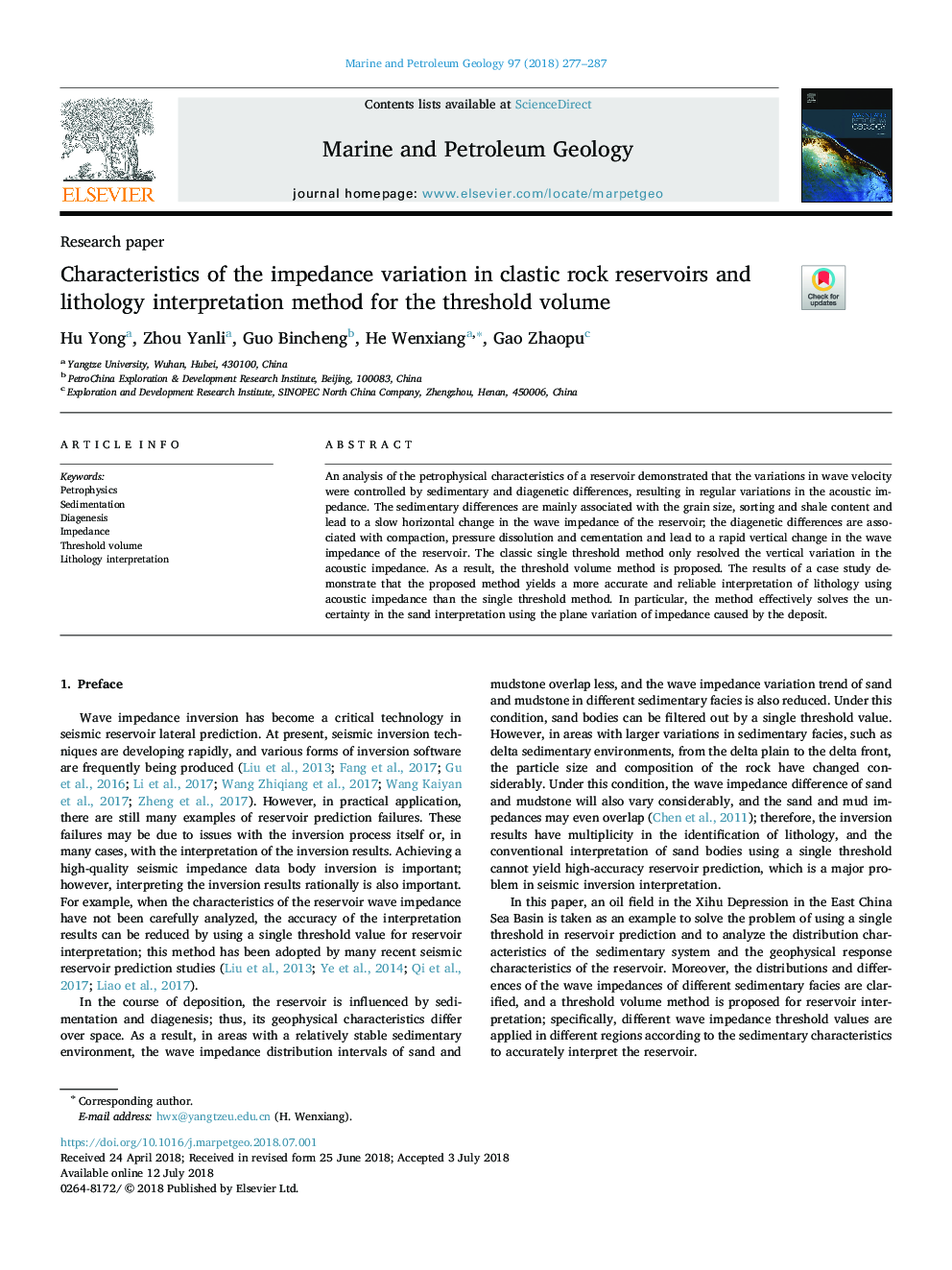| Article ID | Journal | Published Year | Pages | File Type |
|---|---|---|---|---|
| 8908965 | Marine and Petroleum Geology | 2018 | 11 Pages |
Abstract
An analysis of the petrophysical characteristics of a reservoir demonstrated that the variations in wave velocity were controlled by sedimentary and diagenetic differences, resulting in regular variations in the acoustic impedance. The sedimentary differences are mainly associated with the grain size, sorting and shale content and lead to a slow horizontal change in the wave impedance of the reservoir; the diagenetic differences are associated with compaction, pressure dissolution and cementation and lead to a rapid vertical change in the wave impedance of the reservoir. The classic single threshold method only resolved the vertical variation in the acoustic impedance. As a result, the threshold volume method is proposed. The results of a case study demonstrate that the proposed method yields a more accurate and reliable interpretation of lithology using acoustic impedance than the single threshold method. In particular, the method effectively solves the uncertainty in the sand interpretation using the plane variation of impedance caused by the deposit.
Related Topics
Physical Sciences and Engineering
Earth and Planetary Sciences
Economic Geology
Authors
Hu Yong, Zhou Yanli, Guo Bincheng, He Wenxiang, Gao Zhaopu,
